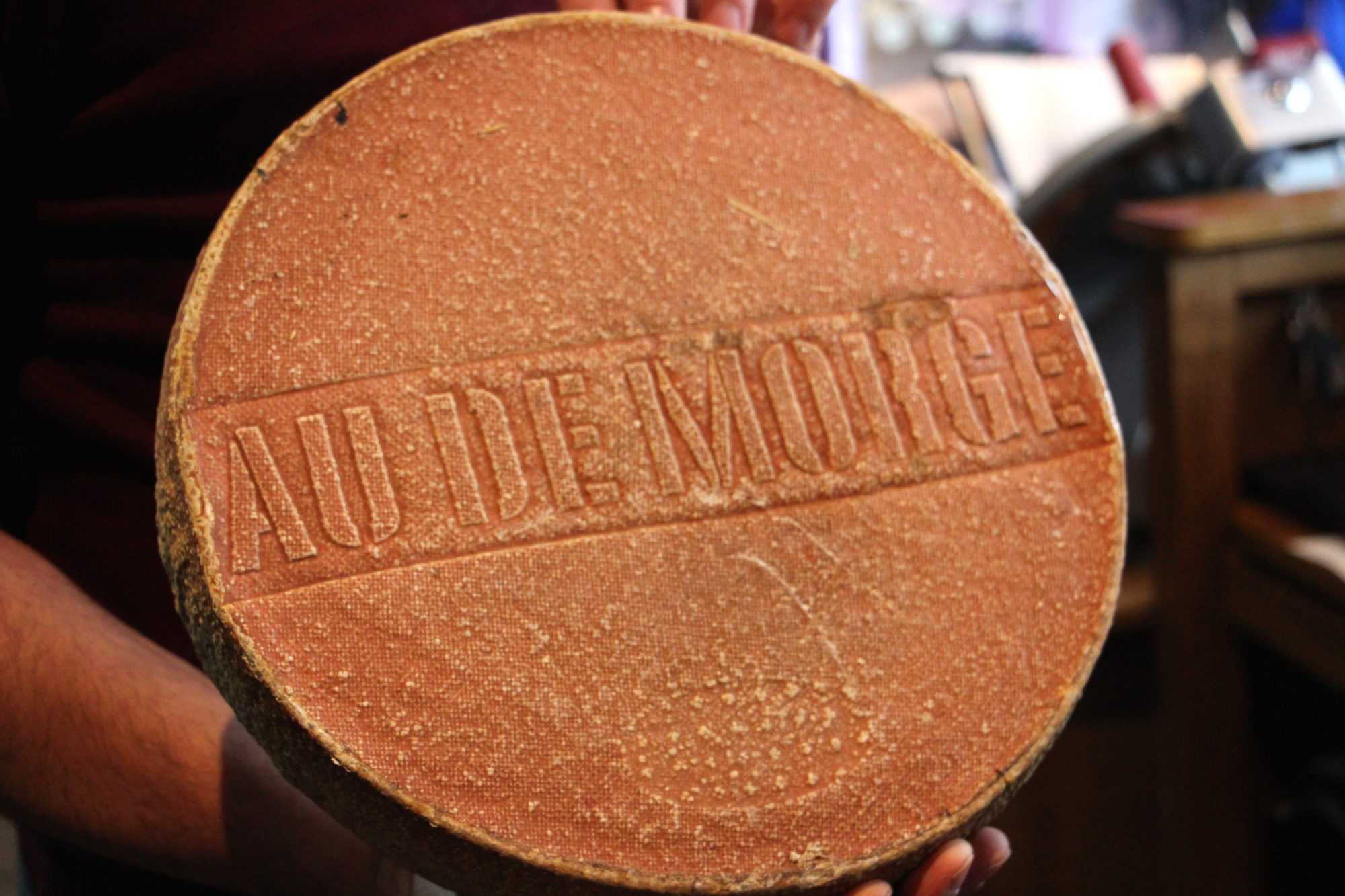When my brother was last in town, we were planning to make a raclette, a dish enjoyed in France and Switzerland for which you serve melted cheese over potatoes, pickles, and ham. The cheese that is used to make this dish is also called raclette – it’s a semi-soft cow’s milk cheese with high fat content. The problem is that my brother’s visit took place in April, and raclette is the sort of thing that you eat in the dead of winter, when bathing suits seem very, very far away.
Instead, we ended up eating quite a bit of cheese, including this one, which was suggested to us by one of my favorite fromagers in the city at La Vache dans les Vignes. Oddly enough, it is a raclette, but we were told – and we completely agreed – that to serve it in such a way would be a waste.
The cheese is called Au de Morge, and it comes from the Franco-Swiss border. Morge in French is the term for the brine that is used to wash cheeses as they age, which adds salt to the cheese and allows the bacteria to develop and form the dark brown crust.
The milk used to make this cheese comes from cows raised at relatively low altitude, above St-Gingolph, which means that the cheese is made quite a bit earlier in the year than many other cheeses of the same style.
Of course, what you really want to know about is flavor. This cheese has a super nutty aroma and an extremely creamy texture, despite it being a semi-soft cheese. It has a lovely complexity, especially near the rind.
While this cheese, like other cheeses in the region, certainly could be used to make a raclette, you’re much better off serving it in slices on good, slightly sour levain bread.


